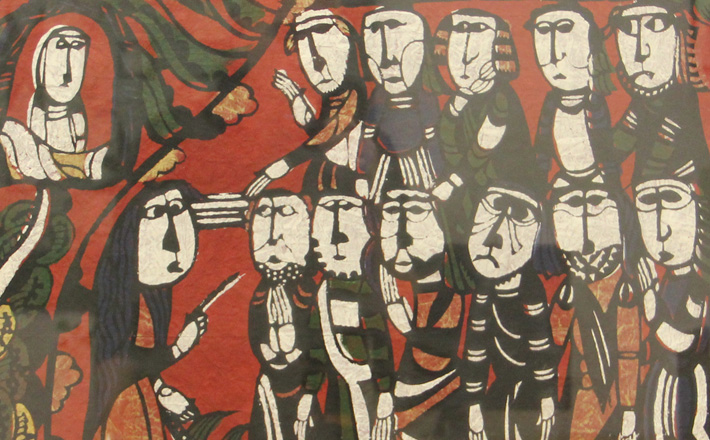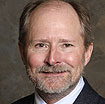Commentary on 1 Corinthians 15:19-26
1 Corinthians 15 is Paul’s most extensive presentation of Christ’s Parousia and our bodily resurrection as a result of Christ’s future coming.
That is because some of the Corinthians have rejected the notion of our bodily resurrection. We do not know for sure why this is the case. It could be that they view the soul as the immortal entity of human existence which is housed in a mortal, disposable body. Or perhaps they hold a realized eschatology which sees Christians as already participating in Christ’s resurrected reality. In any case, throughout this chapter Paul mounts a sustained argument that presents the resurrection of Christ as the foundational basis for our future bodily resurrection.
1 Corinthians 15:19 is not the opening of a new section but the closing of a unit begun in 15:12 wherein Paul draws out the logical inferences to the proposition that there is no resurrection of the dead. If indeed there is no resurrection of the dead, then:
|
In 1 Corinthians 15:19 Paul then presents the concluding implication of this argumentative chain. If Christian hope is limited by the boundary of mortal existence and does not extend to the hope of the resurrection, then Christians are the most pathetic of people since their hope is based on a mere illusion of life beyond death.
Beginning in 15:20, Paul flips around his argument. He opens with the emphatic temporal marker, “but now,” to present divine reality: Christ has been raised from the dead. His intentional use of the perfect, passive verb, “had been raised” highlights how Christ was raised by God in the past and remains resurrected into the present and future. Christ’s resurrection is the first fruit of those who have fallen asleep (a euphemism for death as a transitory but not permanent state of existence). First fruit was the first of the harvest offered to God as its choicest portion which also vouchsafes the rest of the crop. In his resurrection, Christ is the choicest portion of the eschatological harvest which also vouchsafes the rest of the eschatological harvest (an image he will repeat in 15:23a).
Most English translations of 1 Corinthians 15:21 do not quite capture what Paul is highlighting. There is no verb in the parallel clauses of v. 21a and v. 21b. Our translations seek to solve this dilemma by inserting the verbs “came/come” as if Paul is presenting the means by which death and resurrection arrive. Actually, the assumed verb should be “is” as Paul presents the reality of death and resurrection, i.e., through a human is death and through a human is resurrection of the dead.
In 1 Corinthians 15:22 Paul elucidates this reality claim. In Adam, all die. Here Paul is reflecting his broader theological perspective that Sin and Death invaded creation and enslaved humanity through Adam’s disobedience (see Romans 5:12-21). On the one hand, in baptism we were incorporated in Christ’s death and thus died to Sin so that Sin is no longer our enslaving lord (Romans 6:1-14). Nevertheless, Death still holds sway over our mortal existence so that our Adamic reality means we all die. This, however, is not the last word or our final destiny because all humanity defined by Christ will be made alive. Paul’s intentional use of the future, passive verb, “will be made alive” shows that this is a divine future event occurring at Christ’s Parousia. We do not have a mortal soul which will continue to live on after we die. Rather, we are mortal bodies who die, but through the resurrecting power of God we will be made alive.
Paul then goes on to present the culminating chain of events which will unfold at Christ’s Parousia as the end of created time and space. Christ will obliterate every antagonistic power and rule which stands in opposition to God and God’s salvific plan (1 Corinthians 15:24b, 25b). For Paul, these malevolent powers are both human and non-human. This recalls his prior claim in 1 Corinthians 2:7-8 that the rulers of this age did not comprehend God’s hidden plan and so crucified Christ. Ironically, they inadvertently began the divine sequence of events which will result in their own destruction because God has raised Christ from the dead, and his future coming will involve their annihilation. The final and ultimate enemy which Christ will obliterate is Death itself (15:26). In Paul’s theological perspective, Death is not simply the powerful ally of Sin. Death is the cosmic dark lord who has attempted to have final say over everything which God had created. Thus Paul is not thinking about death in existential terms, though he does understand that all of us feel the sting of death in our own mortal, bodily existence. Instead, Paul is thinking on a cosmic scale. In this regard, the ultimate theological question for Paul is not: “What happens to us when we die?” Rather, the ultimate theological question is, “Who has final say regarding the existence of everything in the cosmos, Death or God?” Paul’s answer is clear: At Christ’s Parousia the final victory will belong to God as humanity marked by Christ will be raised; Christ will destroy all that stands in opposition to God; and Christ will hand over everything he has liberated back to God so that God will be the everything in everything (1 Corinthians 15:24-28).
Here we discover that Easter is much bigger than Easter. On the first Easter, God established the course toward which God is drawing all reality. On that day, God did not simply change the existence of Jesus from being dead to being alive. God changed the destiny of the cosmos in the first fruit defeat of Death by raising Christ from the dead. The divine victory at Christ’s future coming will culminate in the ultimate obliteration of the ultimate enemy of God coupled with our bodily resurrection into eternal life.


March 27, 2016